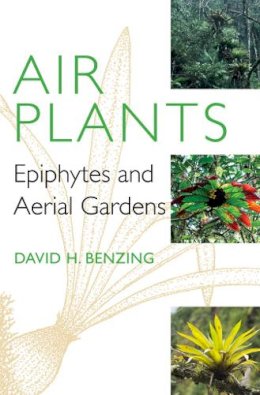
Air Plants: Epiphytes and Aerial Gardens
David H. Benzing
Often growing far above the ground, "air plants" (or epiphytes) defy many of our common perceptions about plants. The majority use their roots only for attachment in the crowns of larger, usually woody plants—or to objects such as rocks and buildings—and derive moisture and nutrients from the atmosphere and by collecting falling debris. Only the mistletoes are true parasites. Epiphytes are not anomalies and there are approximately 28,000 species—about 10 percent of the higher or vascular plants—that grow this way. Many popular houseplants, including numerous aroids, bromeliads, ferns, and orchids, rank among the most familiar examples. In Air Plants, David ... Read more
Benzing's comprehensive account covers topics including ecology, evolution, photosynthesis and water relations, mineral nutrition, reproduction, and the nature of the forest canopy as habitat for the free-living and parasitic epiphytes. It also pays special attention to important phenomena such as adaptive trade-offs and leaf economics. Drawing on the author's deep experience with epiphytes and the latest scientific research, this book is accessible to readers unfamiliar with technical botany; it features a lavish illustration program, references, a glossary, and tables.
Show LessProduct Details
About David H. Benzing
Reviews for Air Plants: Epiphytes and Aerial Gardens
